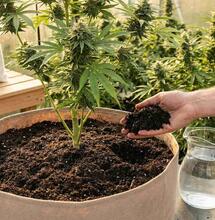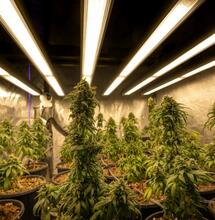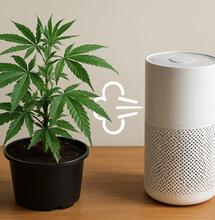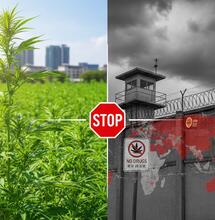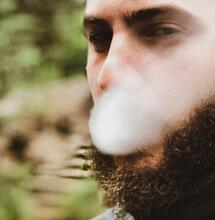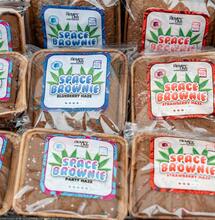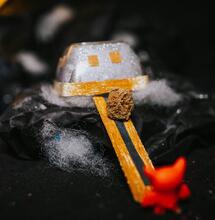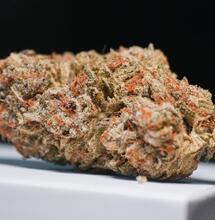Everything You Need to Know About Growing Super Silver Haze
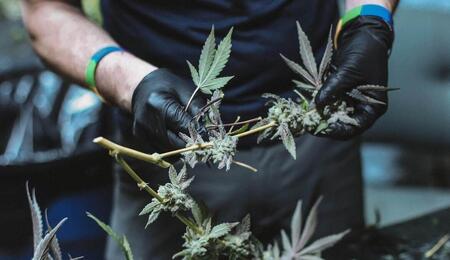
Growing your favorite strain is every stoner’s dream. If that strain is Super Silver Haze, then you are on the right page of the internet. Below are some cool growing hacks to pursue when you plant Super Silver Haze cannabis, a Sativa-dominant strain praised for its extraordinary haze effect and tender Indica touch. Find out more how to grow Super Silver Haze (SSH).
Who can say ‘no’ to Super Silver Haze? It is the luscious haze sensation you want to cultivate at home. With genetics of roughly 80% Sativa and 20% Indica, Super Silver Haze made a boom when it emerged on the Dutch seed scene back in the 1990s. The strain, created by Greenhouse Seed Company - the same company that gave White Widow and Neville’s Haze to the world - won the High Times Cannabis Cup three times in succession, in 1997, 1998, and 1999.
With relative THC contents of around 18%, this impressive hybrid of Skunk #1, Northern Lights, and Neville’s Haze - rejuvenated among the sativa-dominant commercial strains of the day. And unlike other strains whose popularity has fluctuated now and then, interest in Super Silver Haze has remained pretty steady.
The Genetic Lineage of Super Silver Haze
Super Silver Haze takes on the genetics of the legendary Haze sativa hybrid, aka Original Haze, which first appeared in Santa Cruz, California, during the 1960s.
The incredible Haze lineage began with the Haze Brothers, who initially developed a hybrid from Mexican landrace sativa and Colombian landrace. The brothers took the best female flowers from the Mexican-Colombian cross they got, and crossed again with two other landrace strains - Southern Indian landrace and Thai landraces.
The first Haze weed to win the market in the 1970s was Purple Haze. Stoners loved it, even though it came with a salty price tag. However, the pure sativa genetics of the early-day Haze made it difficult for indoor growing. Which would explain why breeders began crossing Haze with Indica cultivars, to improve the ability of this new variety to thrive indoors.
When Nevil Schoenmakers got his hands on pure Haze seeds in the 1990s, he picked female and male plants and began experimenting with new strains at The Seed Bank premises, which he owned. Sensi Seeds Bank, as the seed bank was rebranded later, gained massive popularity for creating an array of potent Haze strains bolstering Indica in their genetic makeup. Of all strains, Super Silver Haze stood out.
What Are the Effects of Super Silver Haze Cannabis?
Super Silver Haze is often described as giving the kind of ‘high’ that no other strain can exactly match. A very happy feeling is what users report after smoking Super Silver Haze. This splendid, sticky Sativa gives a strong heady ‘high’ punch and is felt through the rest of body. While pure Haze might push you completely tripping out, things seem more stable with Silver Haze.
Super Silver Haze is also good for stress, it soothes the entire body, and it increases alertness. Some of the medical uses include relief from daytime fatigue, muscle soreness, chronic back pain relief, nausea and lack of appetite, and it also helps with anxiety, depression, and PTSD.
How to Grow Super Silver Haze Weed?
Homegrowing Super Silver Haze cannabis requires patience from growers until the strain reaches full maturation and yield its fruits with spicy scent and hints of earthy sweetness. While plants give low to moderate yields, and the difficulty of growing is medium to high, the efforts of growing Super Silver Haze are highly rewarding regardless.
Super Silver Haze thrives in warm and humid environments, with temperatures between 70 and 80 degrees °F. Grown outside, this strain flowers during October; ideally you can get around 15 ounces of weed per plant. Indoors, the flowering time is between 56 and 63 days, though some phenotypes might take up to as many as 77 days to flower.
Super Silver Haze can be grown both in soil and hydroponic setup. Using some Low-Stress Training (LST) and the Screen of Green (ScrOG) method should help with improving yields. Below is some key information to support your homegrow efforts with the SSH strain.
Training Super Silver Haze Cannabis Plants
Indoor yield is typically lower than outdoor, but going for ScrOG/LST could help boost the ounces you get from Super Silver Haze plants. ScrOG technique will require LED lights or compact fluorescent CFL grow lights. It will also require a screen or garden netting, where you make netting holes of about two square inches through which the plants can make their way in.
With ScrOG, you may need to manually manipulate branches into the net holes. The screen should be positioned around 10 inches above the grow medium. As you see plants sneaking through the net, stimulate each plant to grow outwards across each net hole. The idea with this method is to get a more even canopy so that every flower from the ScrOG setup receives light exposure directly from the lights setup above the netting. Removing any growth on the base of the plants will further promote flattened-like canopy. Ventilate the canopy to avoid the appearance of mold. Read more about the ScrOG setup here.
Balanced Water and Nutrient Uptake
Overwatering and overfeeding cannabis are two of the most common mistakes when it comes to homegrowing. With Super Silver Haze plants, one of the main recommendations is that you leave enough time between watering and feeding to optimize the roots’ oxygen uptake.
Signs that you might have overwatered your SSH plants include leaves suddenly turning yellow or falling from the plant. Any excess of water principally affects the leaves. If it happens, logically, the next steps should be to water plants less often, but you also must make drainage check and see if the water can freely flow out of the plant container.
A simple method to check if your Haze plants need some water is to dip with the finger into the soil (about an inch), and if the soil appears dry, then you can proceed with watering. If the soil feels moist on the touch, wait for a day or two and make another check.
When it comes to nutrients, Super Silver Haze does not need excessively high levels of Nitrogen during vegetation. Still, dosing should be balanced. Overfeeding may easily lead to nutrient burn, which can show with atypical colorations on the branches, stalks and leaves. Another bad sign that you are making nutrient mistakes would be leaves starting to bend, curl up, or yellow. If you notice anything like that, remove the affected parts of the plant and flush out the growing medium with pH-balanced water (6.0-6.5 for soil, and 6.0 for hydroponics).
To avoid nutrient burn with SSH, gradually add from the nutrient mix on the plants. Start with little, observe how the plants respond, and then increase the dosage.
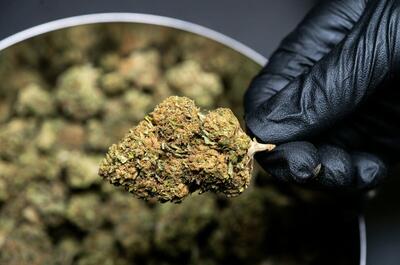
How to Control Temperature and Humidity for SSH Plants?
As mentioned above, Super Silver Haze thrives in warm, humid climates where the temperature range is approximately between 70 and 80 degrees °F.
A temperature disbalance in the grow room may lead to various problems, including inability of your plants to properly soak in water and nutrients. Which can slow down plant growth. You want to avoid any possibility of sudden drops in room temperatures to prevent this from happening.
- Keep daytime temperature set around 75-77°F for freshly seeded plants. In the night, temperatures can fall to 70-71°F.
- In vegetation, increase daytime temperature to around 80-82°F, and let it stay in the range of 68-75°F at night.
- When plants enter their flowering period, reduce the temperatures slightly, to around 72°F,
- In the late flowering period, keep to an average of 68°F.
Of same importance is to control room humidity. First thing, you don’t want the air in the grow room to get too dry as that could force plant leaves to close pores so they could retain moisture. Dry air overworks the plants’ leaves. Setting up relatively high humidity for Super Silver Haze during the early and vegetative stage is critical and it will create a friendly environment for the plants to thrive.
- Retain relative humidity between 65-80% when SSH plants are seedlings.
- Slightly lower down to between 60-70% in the vegetative stage.
- Decrease humidity levels to around 45% when plants start flowering.
- Lower further down to about 35% in the late flowering stage.
A dehumidifier or exhaust fan vent on a high velocity will force hot air out of the grow room, and can help you decrease humidity levels once Super Silver Haze flowers. In addition, you can increase the supply of cool air into the room at this time, as well as schedule watering at the start of the daily lights cycle.
How to Set Grow Lights for Super Silver Haze Cannabis?
Lights govern how plants grow up. Correct light scheme and position, especially as plants enter vegetation, would be one of the critical factors to boost your Haze cannabis. Fail to give Super Silver Haze sufficient light, its stem will elongate and lose vitality while attempting to reach out closer to the source of light. But when it is well exposed to light, the plant will remain vigorous and bump up on buds.
- More powerful LEDs should be kept around 18 inches above the plants, while less powerful LEDs can be kept at a distance of 12 inches.
- Fluorescent CFL lights are weaker and can be kept closer to the plants.
If you are afraid that the close proximity of lights can unleash heat stress, activate a cooling system. That will further facilitate a healthier photosynthesis process for your Super Silver Haze cannabis plants. In case of prolonged exposure to heat, increase CO2 levels in the grow room as well (you can use CO2 tanks), and this should help the plants adapt to the heat. CO2 generators should be used only when the lights are on. Do not overdo, because too much CO2 may result in a waste of energy, and could harm the plants. If your grow room lacks ventilation, a push of CO2 could help you mask the ‘pot’ smell of your plants.
Hydroponics vs. Soil Cultivation
Super Silver Haze cannabis can be grown in both hydroponic setup and standard in soil. The big difference with hydroponics is that you can anticipate an earlier harvest than when cultivating in soils. Anyhow, this is one of those strains that works particularly well with hydroponic systems.
For hydroponics, you can use standard rockwool, which promotes superior moisture retention and oxygen flow to the plants. Coconut fiber or coco coir is also great; it contains extra plant-stimulating hormones which will make the plants more resilient. The desired pH range for hydroponic setting is 5.5 to 6.0. And it is easy to get the plants all the nutrients they need with the readily-available nutrient solution mixes containing all macro- and micro-nutrients.
Growing Super Silver Haze in soil is done best in dark soil mixes with loose textures, which indicates the soil will flawlessly perform the drainage and can hold water without becoming muddy. Attain a neutral pH range when working with soil. You can add organic solutions like fish meal, worm castings and kelp. Plants can also benefit from liquid compost solution applied directly on the ground. See more here about these different types of natural fertilizers.
Loam soil, which is composed of mostly sand silt and small amounts of clay, is considered to be the golden standard for cultivating Super Silver Haze. If you are new to growing, it’s recommended to start with soil. Your local grow shop probably has a high-quality loam soil mixed with different kinds of nutrients; just follow the instructions given on the soil bag.
Happy growing!
Also read on Soft Secrets:
Last updated on February 10, 2025
